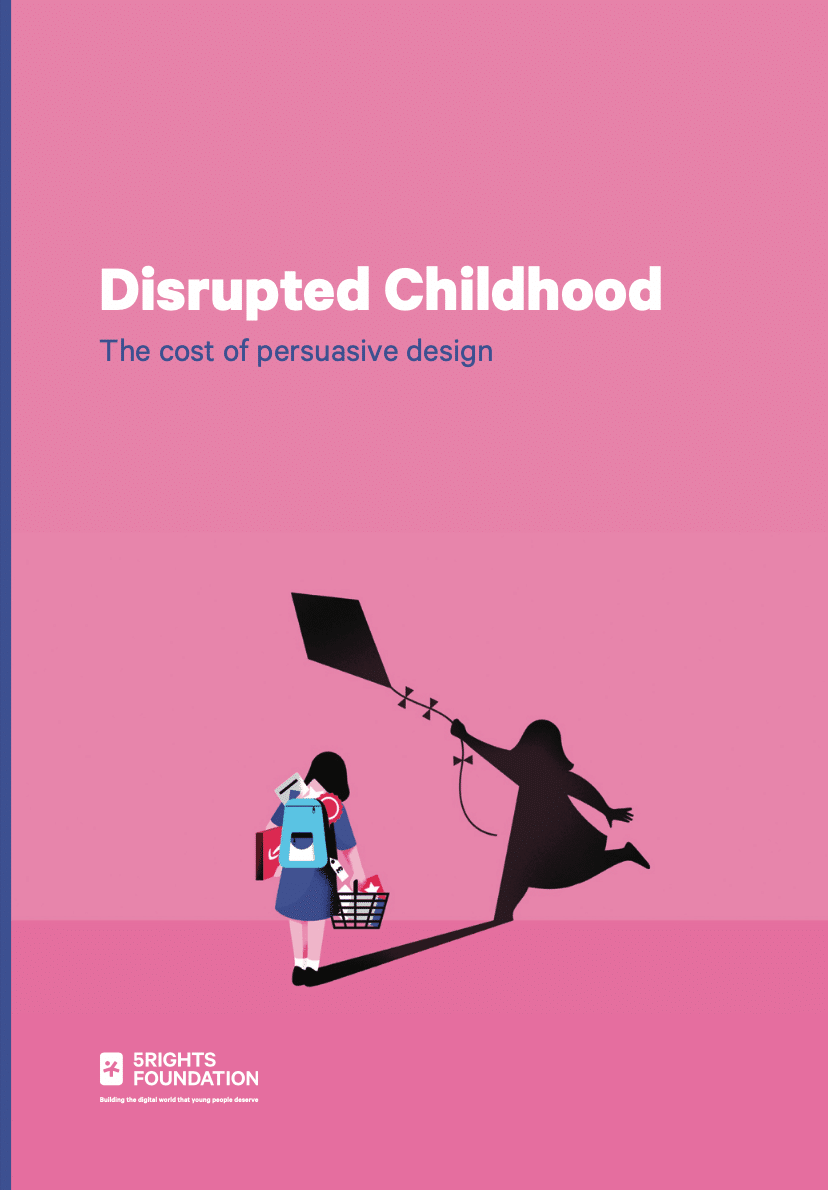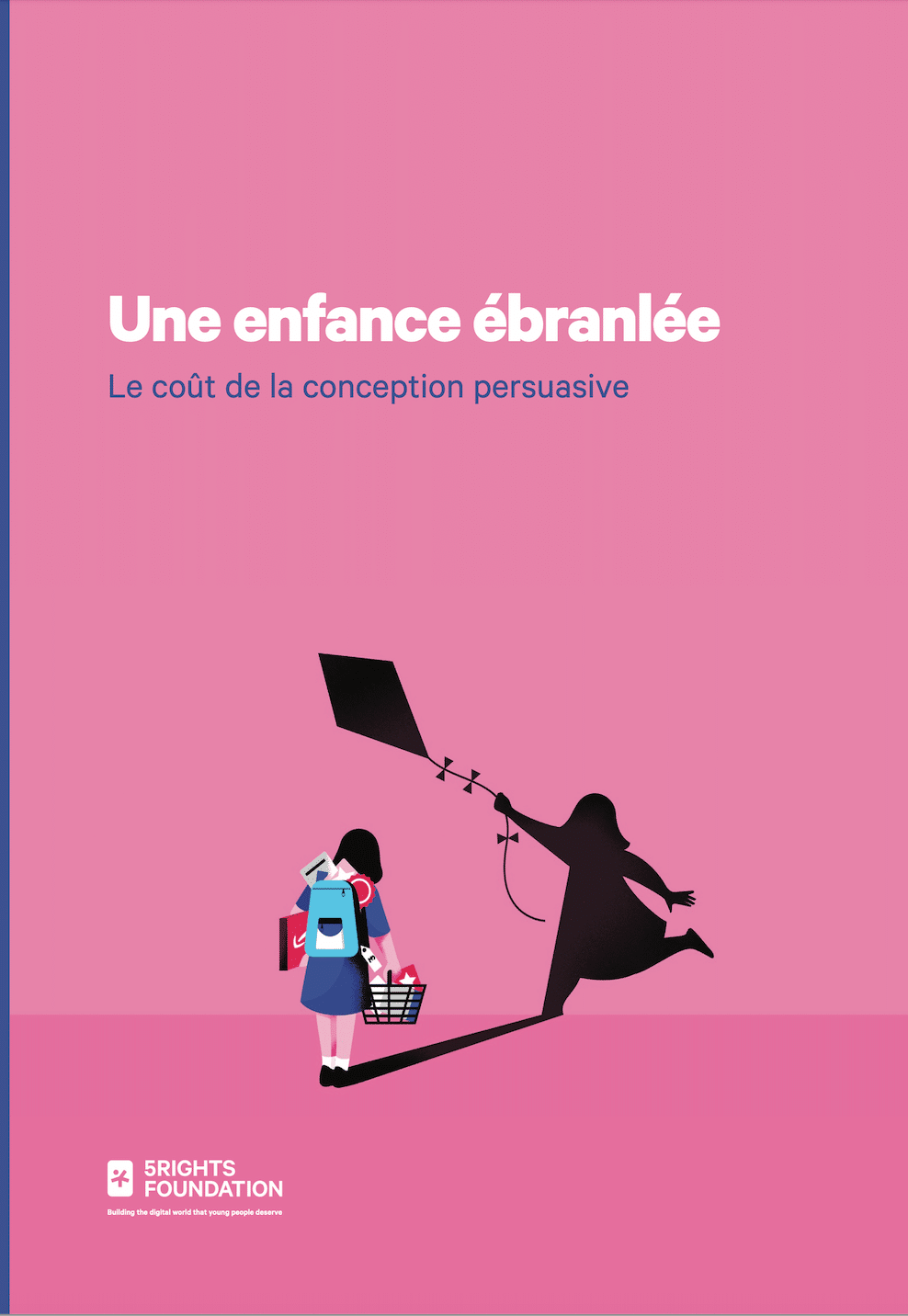Updated Disrupted Childhood: The cost of persuasive design
Five years after its initial publication, 5Rights releases updated version of its game changing report: Disrupted Childhood: the cost of persuasive design.
Five years is a long time in the life of technology, and the life of a child.
We first published Disrupted Childhood in 2018: before the Covid-19 pandemic, before the meteoric rise of TikTok, and before the introduction of the world’s first Age Appropriate Design Code (AADC). While the apps most popular among children in 2023 may be different from 2018, sadly, the most common persuasive design features that monopolise children’s attention are not.
The prevalence of persuasive design in the digital environment is an issue that affects most adults, and almost all children. Whilst the digital environment offers the promise of creativity and knowledge, its current dependence on persuasive design makes it a challenging environment for children and young people that can increase risk, limit creativity and even stifle development.
Encouragingly, there has been some progress since 2018, largely thanks to the introduction of new legislation and regulation such as the AADC, rather than industry-led reform. But in 2023, children remain immersed in digital environments designed primarily to meet the commercial objectives of private companies, and not the best interests of children.
“As we reach a tipping point in the regulation of digital technologies, and with the UK’s Online Safety Bill in its final stages, policymakers and regulators must refocus their attention on the pervasive use of persuasive design and the business models it serves. The safe and equitable design of products and digital services routinely put in the hands of children must be at the forefront of their minds.”
– Baroness Beeban Kidron
In this updated report, we examine the persuasive design features and strategies common to many popular digital products and services used by children today and consider their impact on children’s social, mental and physical development.
We call on governments, regulators and the technology sector to focus attention on the design of digital products and services; to ensure that design strategies (and the commercial objectives that shape them) recognise, respect and uphold children’s rights.
Also available in French.


